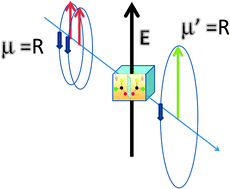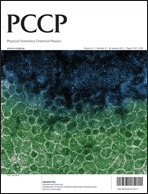Ab initio study of the circular intensity difference in electric-field-induced second harmonic generation of chiral natural amino acids
Abstract
We present a systematic computational study of circular intensity difference (CID) in electric-field-induced second harmonic generation (EFISHG) of some representative chiral natural amino acids (Alanine, Arginine, Aspartic Acid, Cysteine and Tryptophan), taking into account the electric-dipole, electric-quadrupole and magnetic-dipole interactions. The calculations are performed by applying cubic response theory at both Hartree–Fock and Density Functional theory levels, the latter with the popular Becke-three parameters, Lee, Yang and Parr (B3LYP) functional. Special focus is given to the basis set, electron correlation and origin dependence of the properties. The full set of molecular parameters defined by Lam and Thirunamachandran in their reference theoretical paper published in 1982 [J. Chem. Phys., 1982, 77, 3810] is obtained and discussed. This permits the prediction of the CID observable for different possible experimental setups.


 Please wait while we load your content...
Please wait while we load your content...